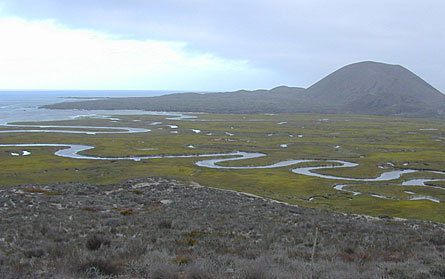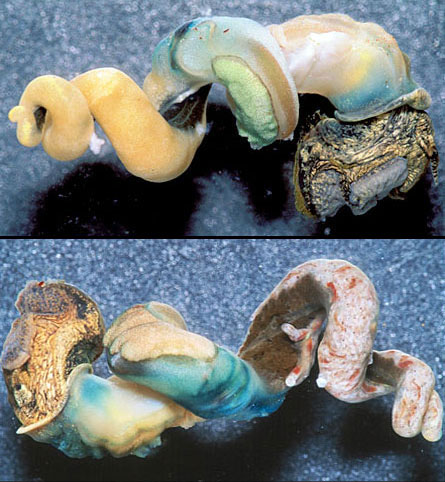A bird parasite here, a snail parasite there, and pretty soon you’re talking about real biomass.


Parasites, including plenty that sabotage snail reproduction, add up to an amount of flesh that’s “surprisingly substantial,” says Armand Kuris of the University of California, Santa Barbara.
Although ecologists recognize that parasites can affect ecosystems, many food web analyses assume that parasites don’t account for much of the actual mass of living tissue, he says.
He and 17 other researchers have now finished a painstaking accounting, in three estuaries, of free-living creatures, such as crabs, fish and birds, and the parasites that call them home.
The mass of just the parasites accounted for 0.2 to 1.2 percent of the total animal biomass, the researchers report in the July 24 Nature.
The percentage “is quite a remarkable estimate,” says aquatic ecologist Kirk Winemiller of Texas A&M University in College Station.
There’s more parasite mass per hectare than top predator mass per hectare, the researchers report. In the most parasite-rich estuary, parasites amounted to some 11 kilograms per hectare. That’s roughly equivalent to an extra four great blue herons per hectare.
That whopping number, Winemiller says, “should compel aquatic ecologists to pay closer attention to the potential influence of parasites.”
The amount of biomass within various parts of an ecosystem can provide clues about how a system works, such as how much energy flows where. “It turns out that infectious processes in these systems are at least as important as predation,” Kuris says.
Ecologist Don Strong of the University of California, Davis agrees that the biomass size is impressive for the parasites. But, he adds, “I’m more interested in what they do.”
An estuary makes a good system of moderate complexity for trying to determine parasite biomass, Kuris says. “It’s not a very simple ecosystem, but it’s not a rainforest either.”
He and his colleagues made extensive sampling trips to sites in three estuaries: Bahia San Quintín and Estero de Punta Banda in Mexico and the Carpinteria Salt Marsh in California. Researchers collected and dissected more than 17,000 individual creatures (most of them shrimp), including 199 species of free-living animals.
The research team worked to calculate the total biomass of the birds, bivalves, snails, crabs, burrowing shrimp, fish and other free-living residents who are longer than 1 millimeter. Dissecting out and weighing these animals’ parasites (not including microbial parasites) gave the team what Kuris calls a conservative estimate of the total parasite biomass.
The most common parasites were the trematode larvae that attack mollusks and take over their reproductive systems. The hosts no longer make their own babies but spend their long lives, sometimes more than a decade, as a trematode nursery.







